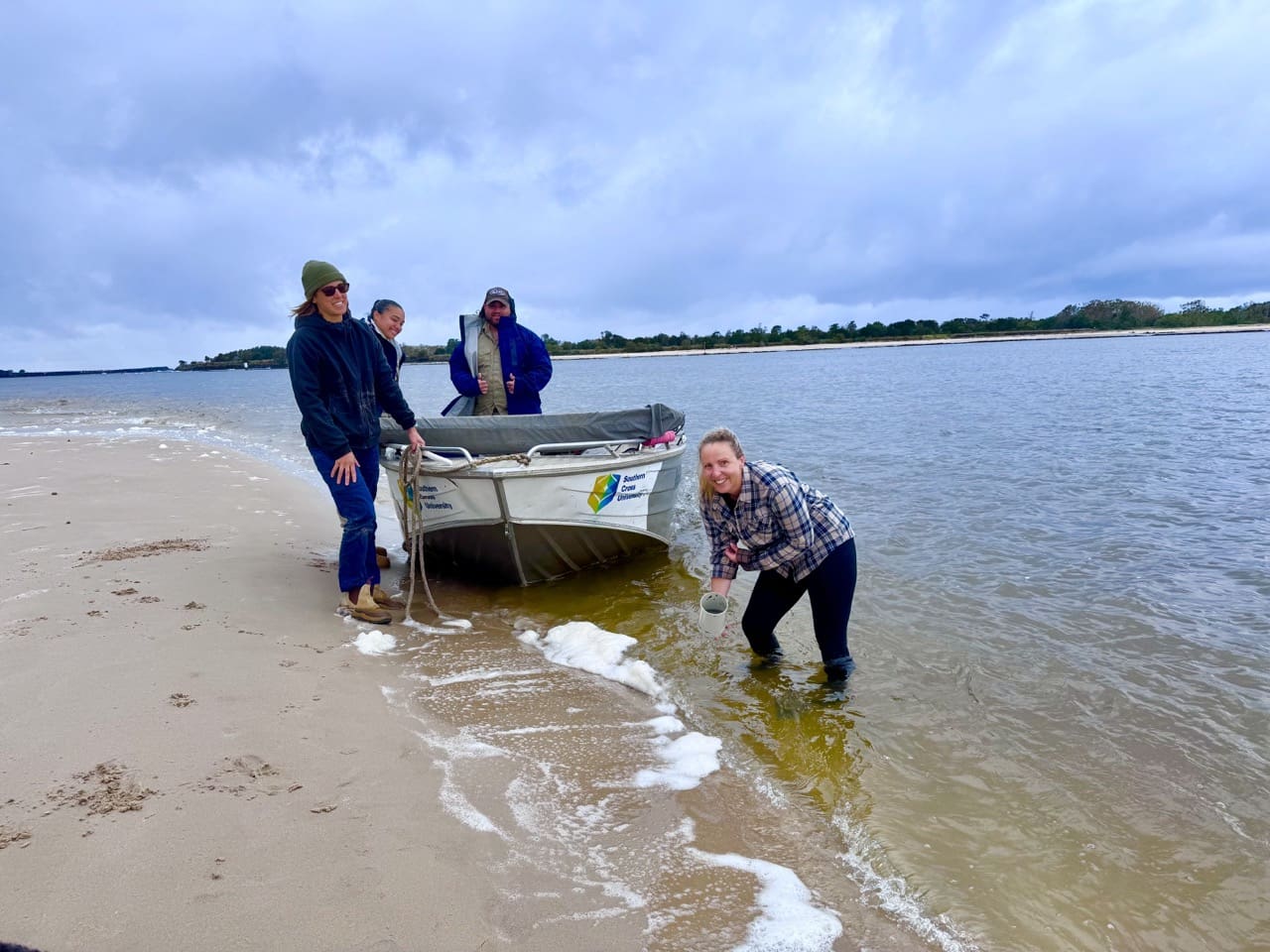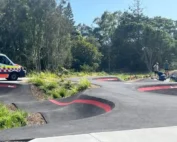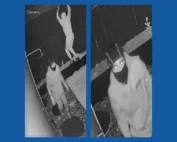
What’s Lurking Beneath? DNA Detectives Unlock the River’s Secrets
As storms lashed Ballina this week, a team of scientists crouched at the murky edges of the Richmond River, collecting water samples.
Just as detectives use DNA to solve crimes, these scientists are applying the same relatively modern science to uncover the hidden life of our waterways.
Led by Southern Cross University Chief Scientist Dr Maarten De Brauwer, the project is one of the most ambitious biodiversity surveys ever undertaken in NSW.
The team is using environmental DNA (eDNA) testing to get a detailed picture of life in 220 rivers and estuaries along the coast.
For the Richmond catchment, it’s providing the very first accurate baseline measure of what species live in the catchment, from the tiniest bacteria to invasive pests.
“We’ve already detected more than 3,600 species in the Richmond,” Dr De Brauwer said.
“The power of this method is that it picks up everything, not just fish or plants. We actually get a complete snapshot of the ecosystem.”
Surprising discoveries
Among the more unusual findings was the detection of water buffalo DNA in the river.
“At first I thought it was a mistake,” Dr De Brauwer admitted.
“But after some detective work, we discovered a local farm was using water buffalo to train draft horses and their faeces had washed into the waterways.
“It was a quirky reminder of just how sensitive this technique is.”
The study has also shown how far invasive species have spread. Cane toads, for example, were recorded as far south as Coffs Harbour, while European carp were detected frequently across the Richmond and in estuaries up and down the NSW coast.
Extreme events leave their mark
The Richmond is one of several “sentinel estuaries” monitored twice a year, in summer and in winter, with extra sampling after major events.
Because of Cyclone Alfred’s floods this year, the Richmond has already had four separate testing rounds.
The results are showing just how dramatically extreme weather can reset an ecosystem.
“After the cyclone, everything changed,” Dr De Brauwer said.
“Normally you’d see very different communities between the mouth of the river and the freshwater reaches.
“But straight after the floods, everything looked the same – one big freshwater washout.
“The question now is how quickly it bounces back.”
The research is being funded through state and federal Disaster Recovery programs to help guide future planning.
“Understanding how biodiversity in estuaries changes over time, especially in response to extreme events, can help governments design better responses to maintain or restore ecosystem health,” Dr De Brauwer said.
Indigenous knowledge key
A distinctive part of the program is its collaboration with Indigenous ranger groups, including the Jali Rangers in Ballina.
“They bring invaluable local knowledge,” Dr De Brauwer said.
“They can point us to culturally significant sites, or explain why one spot might have unusual results.
“At the same time, we share the data so communities can use it to manage weeds, track culturally important species, or monitor restoration projects. It really goes both ways.”
More than just species counts
While quirky discoveries and pest detections grab attention, Dr De Brauwer said the long-term value is in establishing a baseline for river health.
“Until now, we didn’t really know what normal looked like,” he said.
“After the 2022 floods, we knew things were badly affected, but we couldn’t measure how much, because there was no benchmark.
“This project is about creating that baseline, so when the next flood, bushfire or drought hits, we can see exactly what’s changed and how ecosystems recover.”
Future research will expand into testing for pollutants such as pesticides and heavy metals, which can affect the sensitive bacterial and plant communities that sit at the base of the food chain.
Why it matters for Ballina
The Richmond River has long been central to debates about water quality, fish kills and flood management. This new research offers councils, land managers and the community evidence-based data to act on.
“It’s not just academic,” Dr De Brauwer said.
“This information is being shared with councils, Indigenous groups and local communities so they can use it to restore wetlands, manage invasive weeds and protect threatened species. Ultimately, it’s about giving people the tools to care for our waterways.”
Results from all the tests undertaken can be accessed publicly via an interactive map







